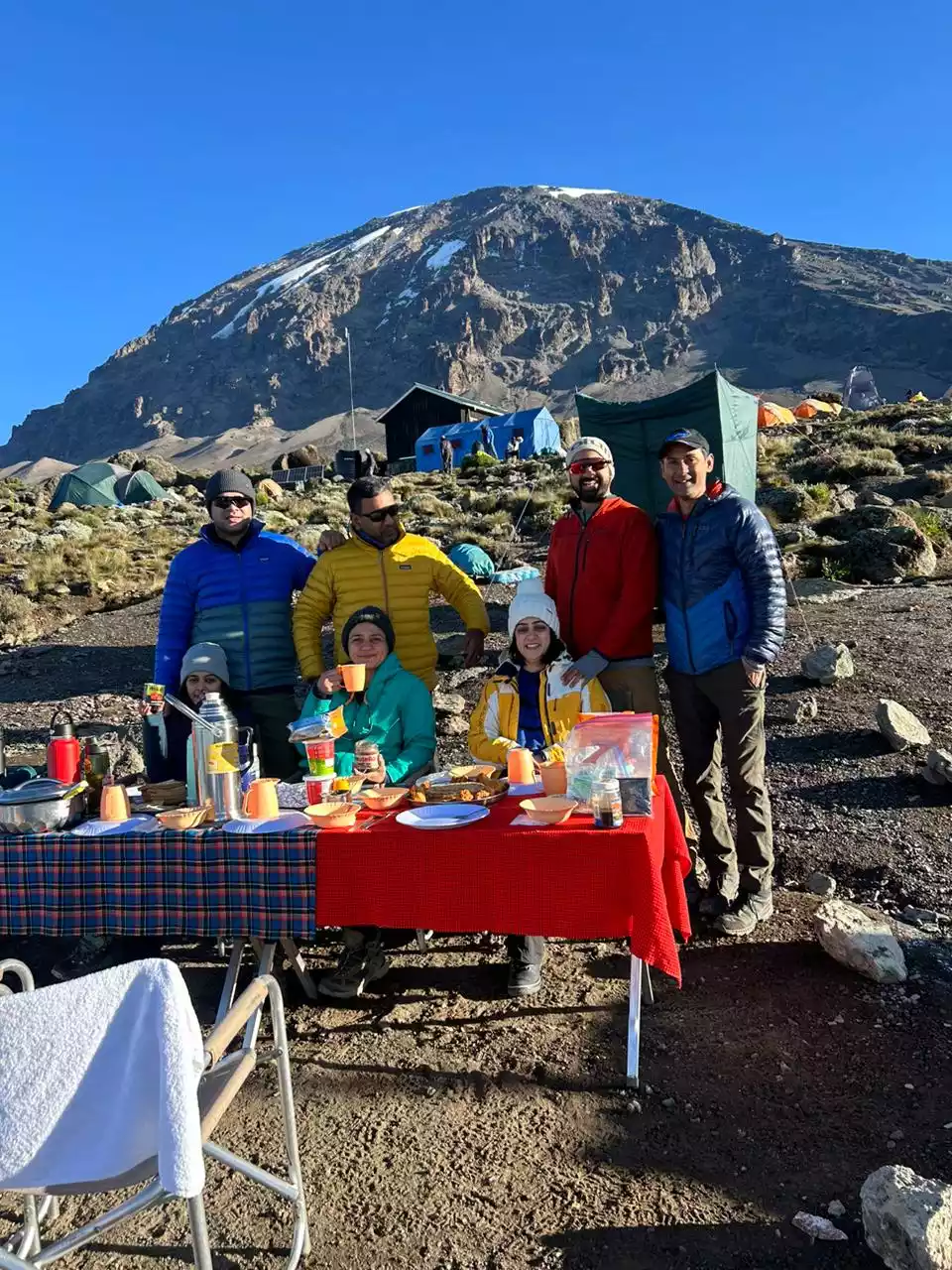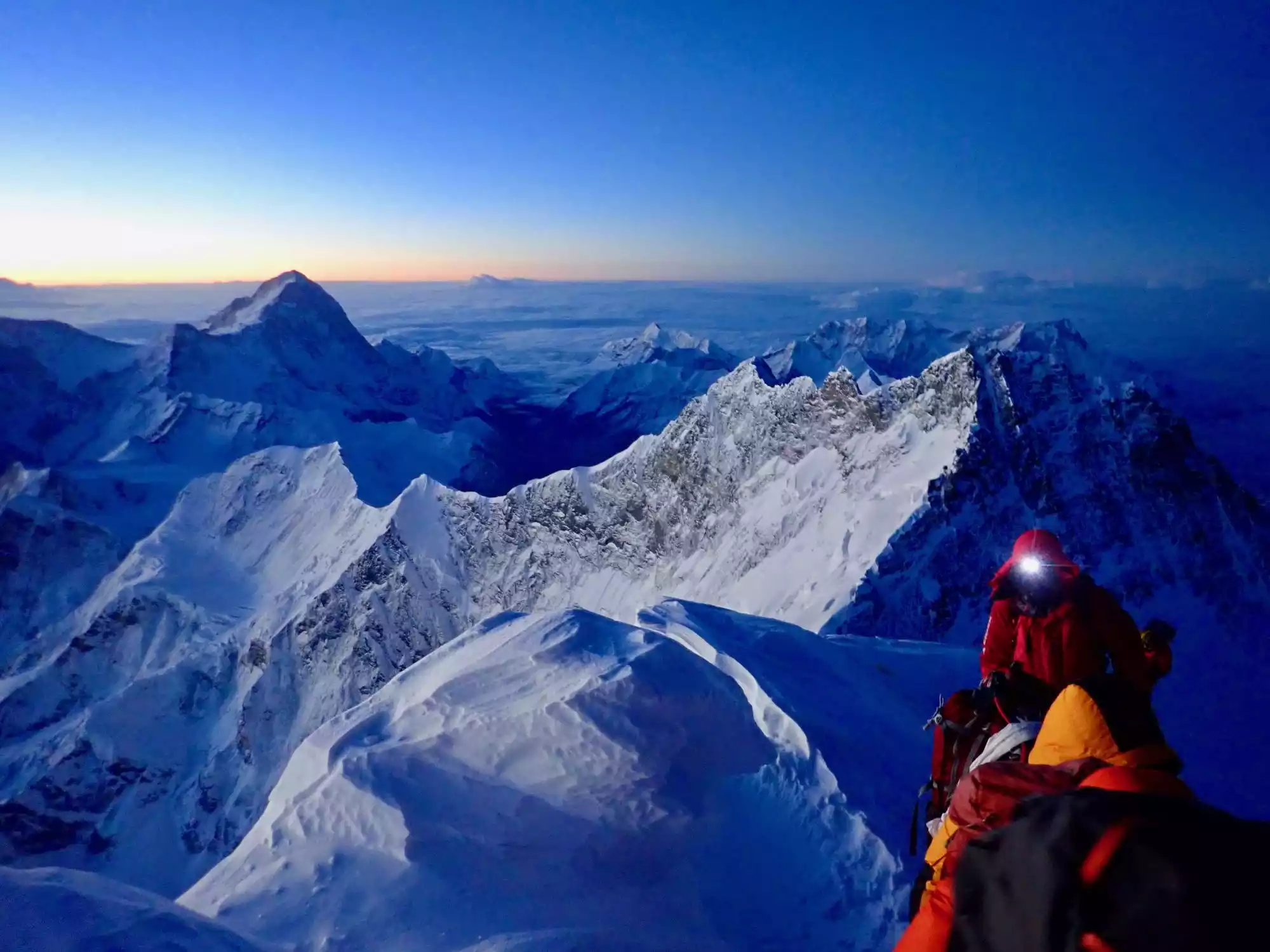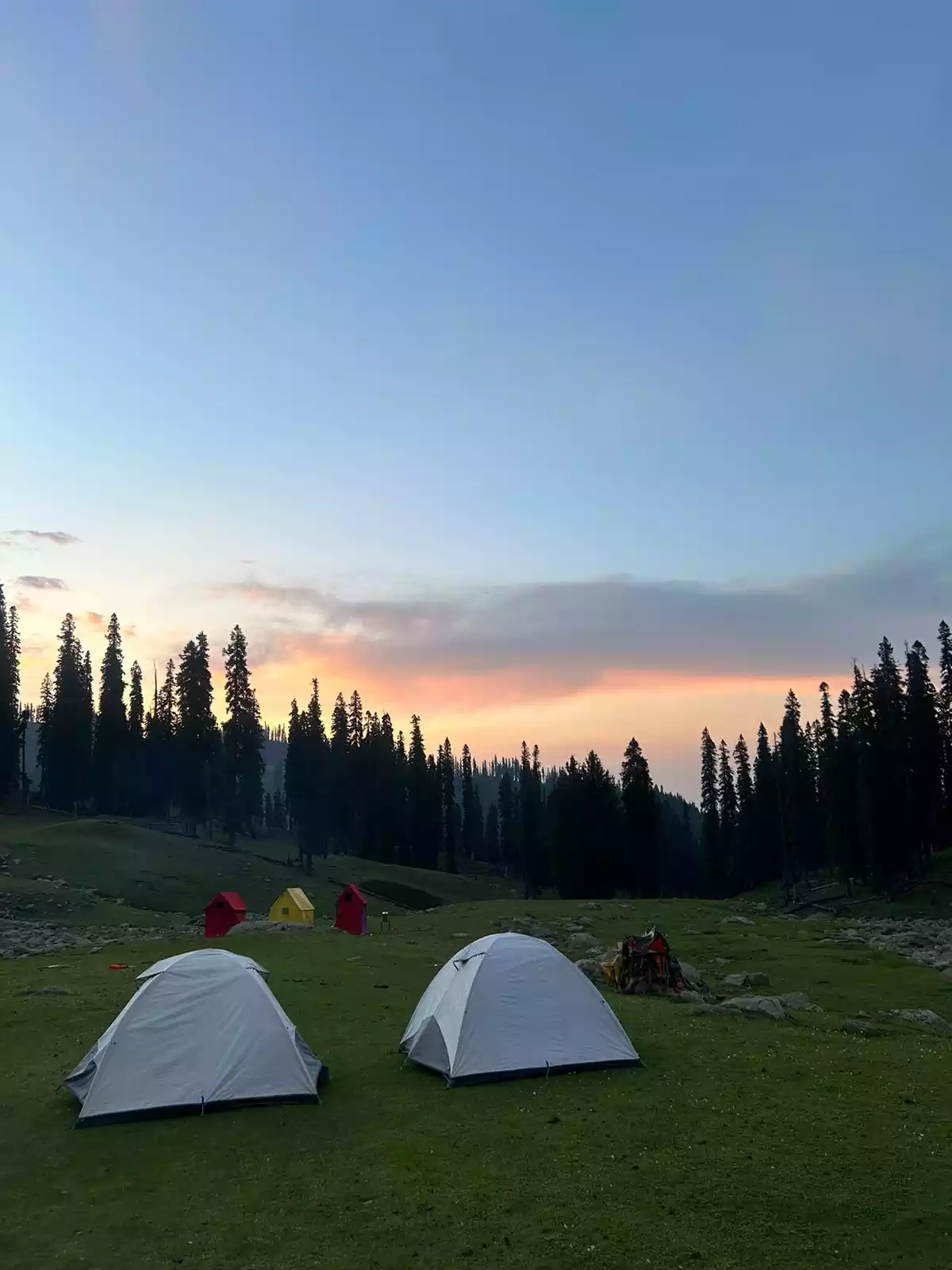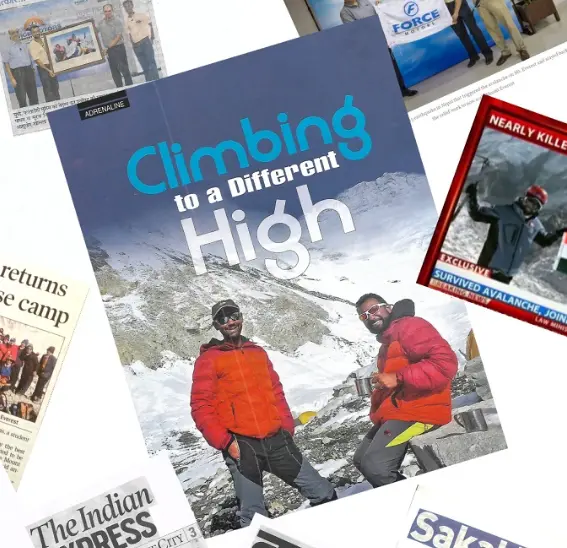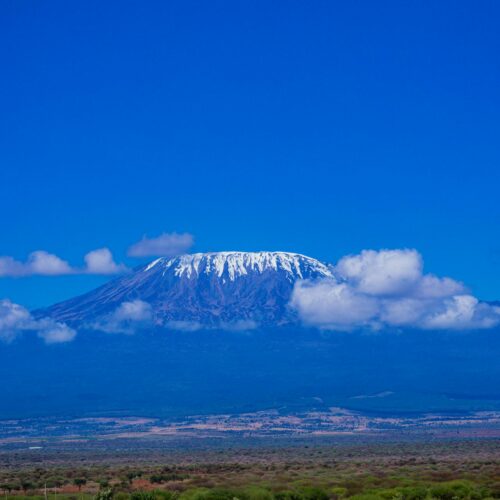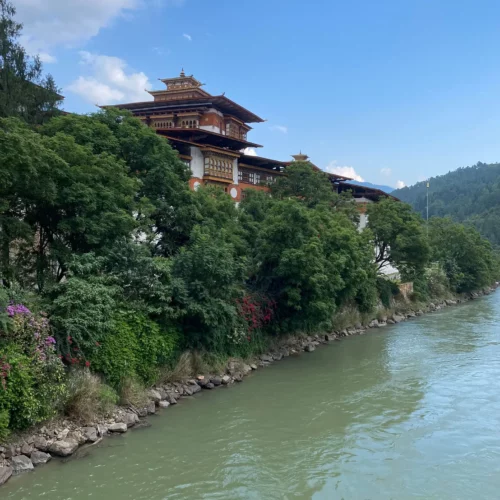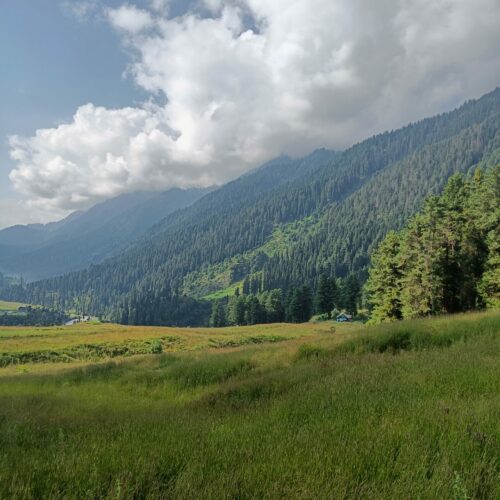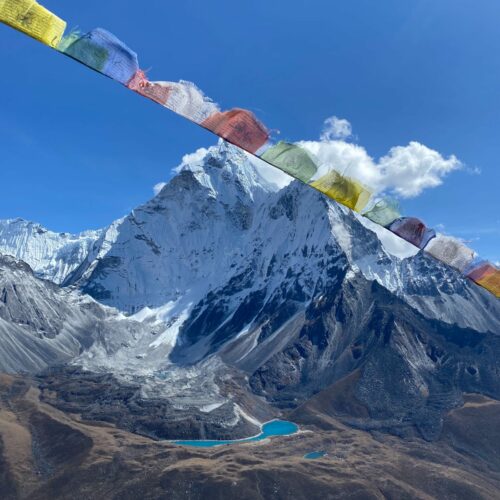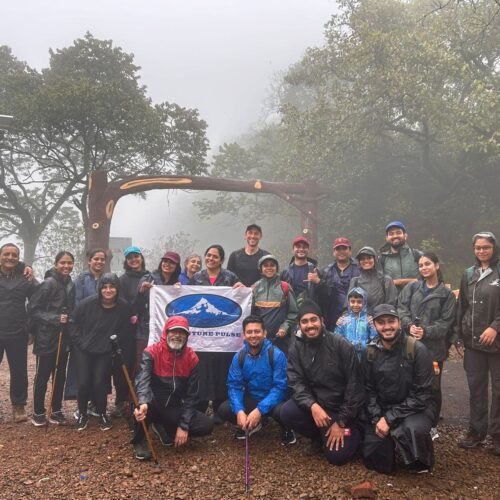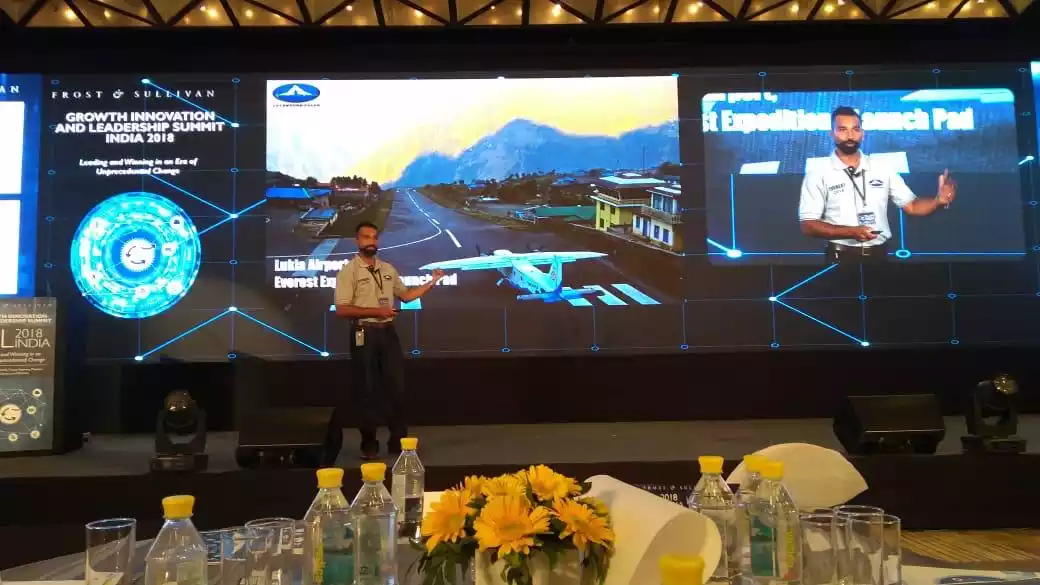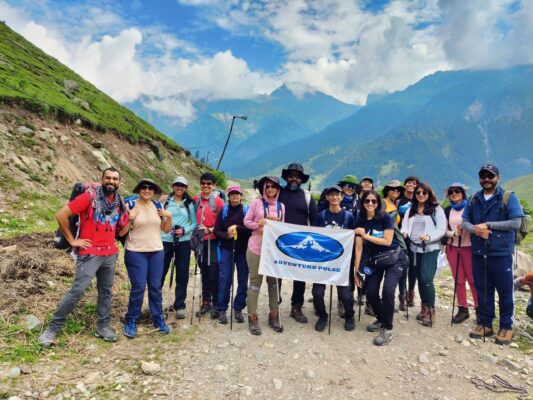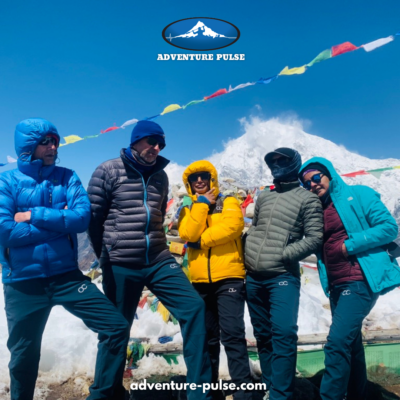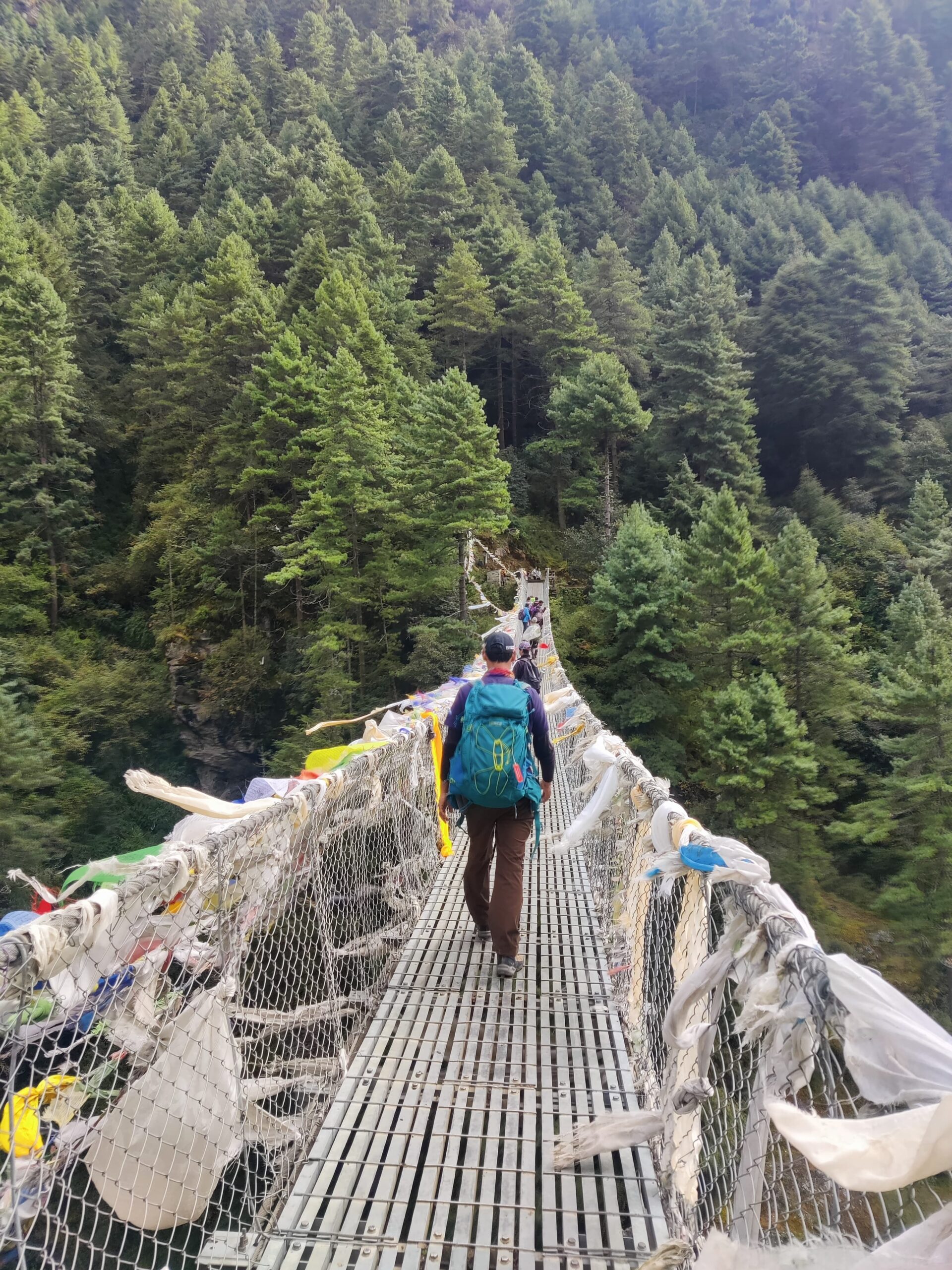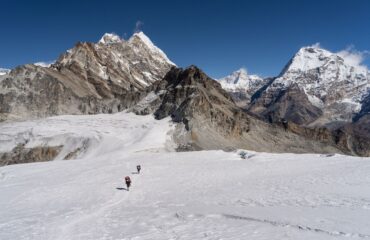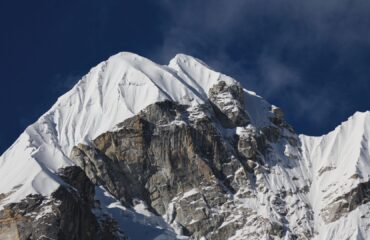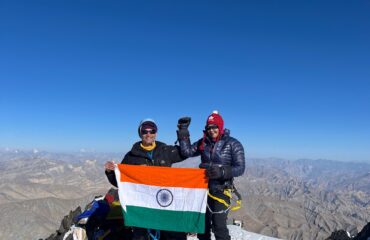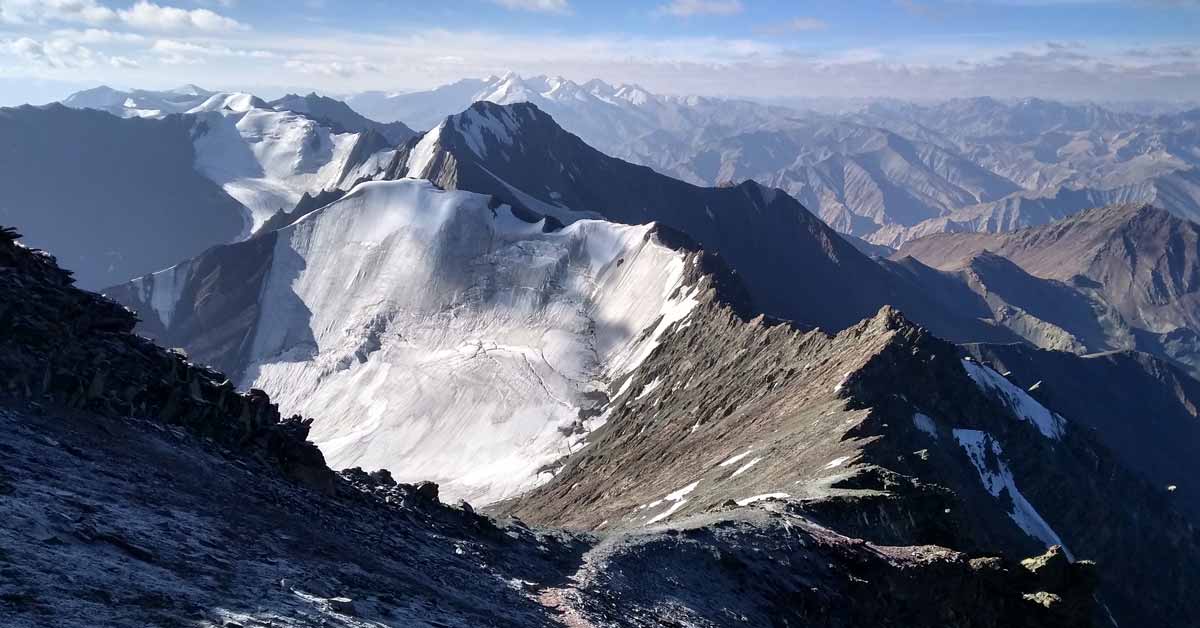
A couple of days back I was looking to plan a trek in Leh. It was winter and I felt a sudden urge to go trekking in the mountains. Scrolling through my options, I came across an article talking about the ban on the Mt Stok Kangri trek in Ladakh. I immediately started reading as much information as I could. About the ban, the causes and anything I could google. Reading these articles, I began to reminisce about my experience on this beautiful mountain.
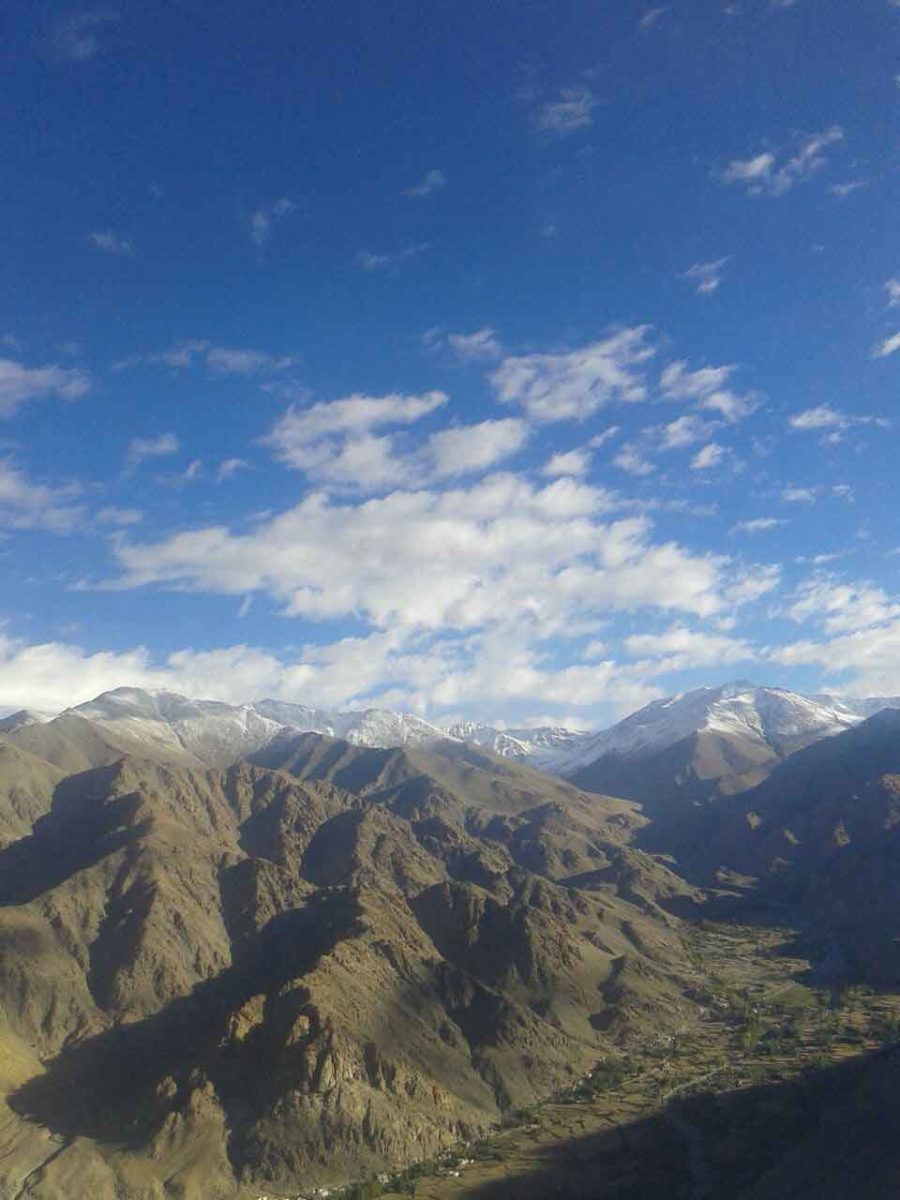
Mt Stok Kangri Trek Image of Mountain Peak
It all started when my friends and I came back from the Mt Everest Base Camp Trek. After a successful trek, we were looking to climb even higher. Plus, I had heard that Mt Stok Kangri was easy to achieve peak and even amateurs were able to climb it. Being about 600m higher than Mt Everest Base Camp, it sounded very exciting.
I should mention here that we all were 15 years of age. Despite this, we felt confident after our performance on the Everest Base Camp trek.
Looking back, I must say, Mt Stok Kangri trek is by no means easy. Although they say it is a non-technical mountain, some prior knowledge would be very helpful. At one point, I remember walking on a narrow ridge with a hundred ft drop on either side. Oh, and did I mention the extreme cold and the strong winds trying to push you off?
At the height of 6153m, Mt Stok Kangri is one of the highest trekkable mountains in the world. In comparison, Mt Kilimanjaro, the highest mountain in Africa, is at the altitude of around 5895m.
Due to its altitude and accessibility, it’s very popular among Indian and international climbers. It serves as an entry point for amateur trekkers, as well as seasoned mountaineers. The terrain makes it ideal for practice and training for higher mountains.
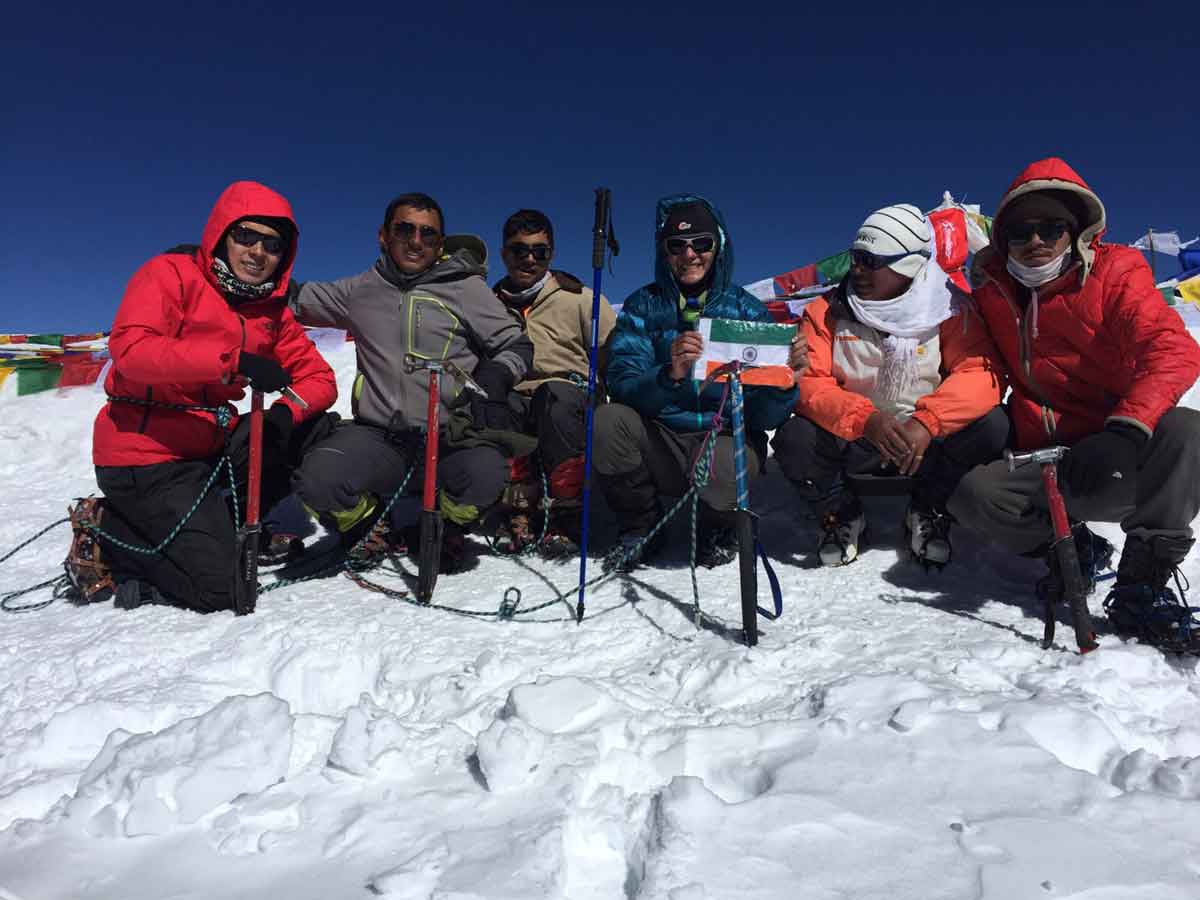
Adventure Pulse Image of Trekkers on Snow with Gears
Also, there is another high altitude trek with similar features called Kang Yatse II trek. Offering a similar experience, this is also a non-technical trek at a height of 6250m, but is not as well known. In spite of these similarities, it hasn’t seen the same extent of commercialization as the Mt Stok Kangri trek.
These treks have been a boon for the economy of Leh and its people. It is contributing to the already thriving tourism industry in the region.
Mt Stok Kangri trek attracts a wide spectrum of climbers. So, there has been an increasing number of tour operators to cater to the increasing numbers.
As a result, Leh and the Stok glacier have experienced a large and unchecked influx of tourists. This has lead to irresponsible tourism and uncontrollable over-commercialization.
My expedition with the team of Adventure Pulse started as the season was ending. We were lucky not to encounter large numbers along with us, although we did meet a couple of climbers on our way.
The months of July and August are the peak season for these high altitude treks. During this period, large numbers of climbers flock to this glacier, putting a toll on it and its limited resources.

Mt Stok Kangri Trek
Along with depleting oxygen levels and cold temperatures, its high altitude makes an ascent dangerous if proper safety measures aren’t followed.
A few years back, the body of a climber from Punjab was found frozen on the summit. It was later found out that he was climbing without a guide or proper equipment.
I have personally seen many trekkers not following adequate acclimatization practices before climbing. This eventually causes greater problems higher up on the mountain and can even lead to severe AMS.
There has been a rising number of deaths and accidents on the mountain due to the neglect of proper mountaineering practices. Also, many expeditions focus on cost over safety, with a focus on leading mass expeditions up the mountain.
Expeditions led on the mountain generate a lot of waste. I have also observed another factor between Mt Stok Kangri and other mountains I’ve climbed. The beautiful river flowing throughout the route and along the campsites can act as a convenient waste disposal system.
The way expeditions generally deal with waste on the mountain is a bit different. We have to dig holes and pitch up toilet tents. Also, you have to carry other heavy waste up and down the mountain. The river just offers an easy solution to these problems.
Not only are these practices unethical, but they are also highly unsustainable. They cause irreversible environmental damage to the mountain and the glacier.
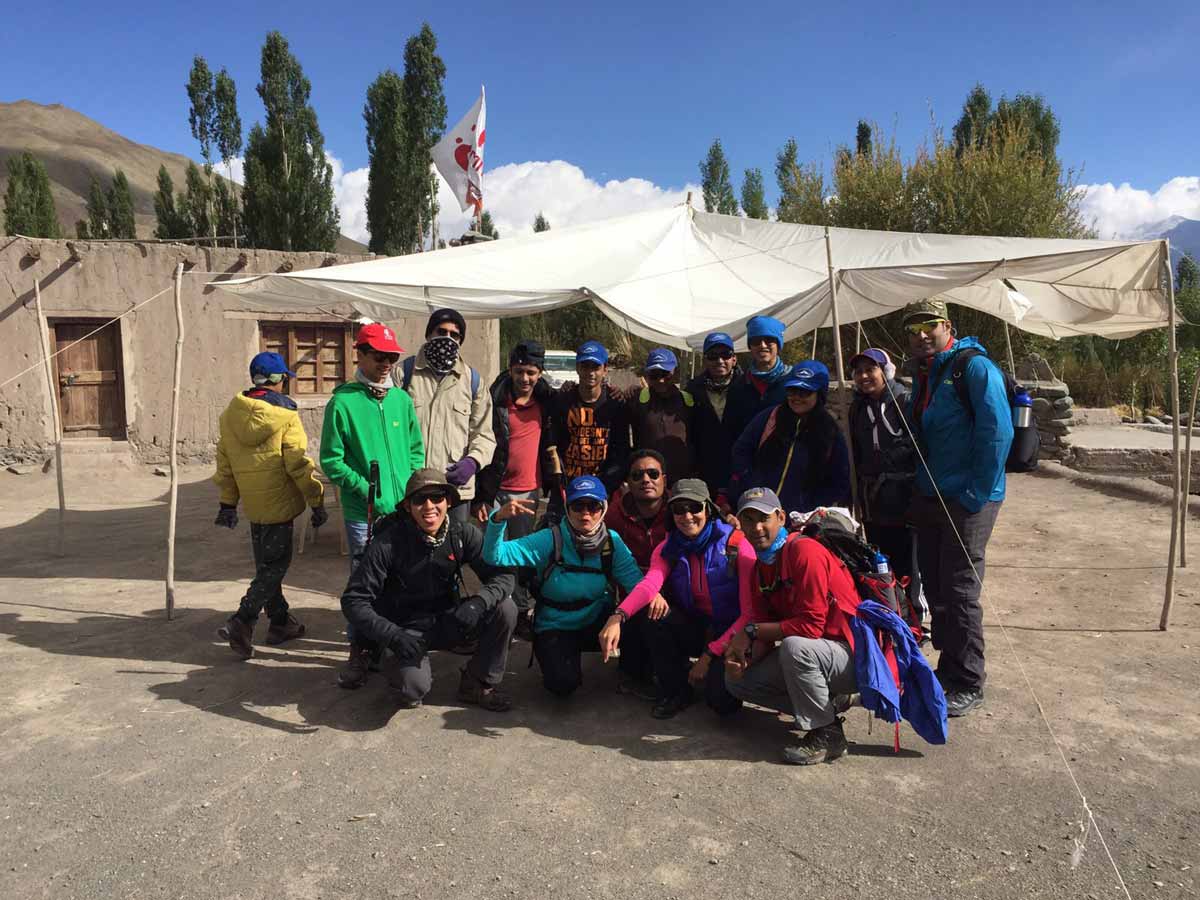
The trek begins from the Stok Village, established around the river flowing through it. It is about an hour’s drive from the city center and acts as the starting point for the Mt Stok Kangri Trek.
For generations, the local community of Stok village has depended on the glacier as a source of water. However, in recent years, there has been an increasing number of mountaineers and porters passing through it.
Their constant movement up and down the mountain pollutes the only source of water for the village taking away a major part of their sustenance. Besides this, the Meteorological department reported an increase in local temperature by 1-5 degree C.
This alarming discovery initiated a response from the authorities and the locals. The ‘Stok village committee’ and the ‘All Ladakh Tour Operator’s Association’ have taken a call to protect the region. They have closed the Mt Stok Kangri trek for all expeditions from 2020 to 2021.
This decision will certainly have an adverse economic impact on the city of Leh and its locals. Still, the authorities and locals gave a positive response, taking a step to protect the mountain and prevent irreversible damage.
The government has now announced the closure of the trek from 2020. There is a need to look at different solutions to ensure such a situation does not repeat itself.
The Chadar frozen river trek is also facing the same issue. It also suffers similar problems of unsustainability and over-tourism each year.
I was lucky enough to experience the grandeur of Mt Stok Kangri trek.
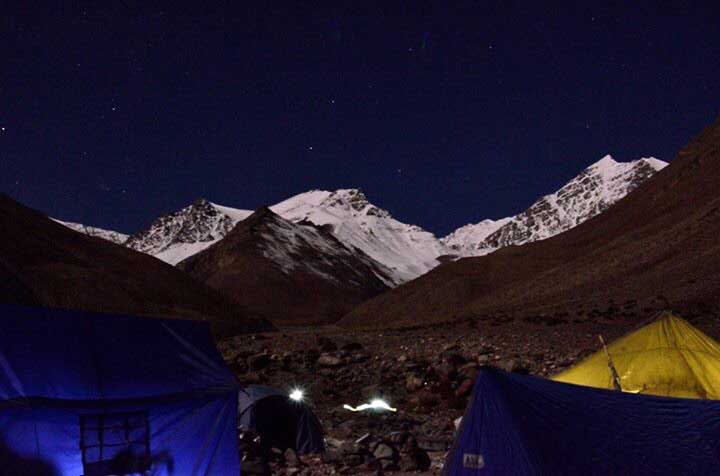
With its massive glacier and a panoramic view of the Karakoram ranges, this majestic mountain altitude peak. certainly has its own allure. I would have recommended it to anyone looking to climb their first high altitude mountain.
The decision to close it, although disheartening, is nothing short of logical. Certain measures to protect it now seem unavoidable and I believe they have been taken in the best interest to preserve this unique peak.
There are numerous ongoing discussions on global warming and its prevention. As an integral part of this, the conservation of nature plays a fundamental role in making our planet greener.
The tour operators have to change their approach to organizing expeditions. Also, we as trekkers bear the crucial responsibility to maintain the surroundings we climb in. Plan every trek with the goal of ‘leave no trace behind’ in mind.
This type of ecologically sustainable trekking seems like the only solution to such problems. It may help to avoid more of such measures to protect the very mountains we dream of climbing.
While Mt Stok Kangri trek remains closed, there are alternatives such as Kang Yatse I and II in the same region.
Kang Yaste II is also a non-technical climb that offers a similar experience to Stok. It will be interesting to see how commercial expeditions are now led on these mountains in the light of the recent action taken to preserve Stok.
We’ll have to wait and see if the expeditions are led in a more ecological and sustainability-focused format. But I must say Mt Stok Kangri Trek in Ladakh was one of the Best Adventure Trek ever.
Kanishk Pande, at the age of 19 years, is an avid mountaineering enthusiast having trekked the Everest Base Camp in Nepal, Mt Kilimanjaro in Africa and Mt Stok Kangri trek in Ladakh; to name a few. His passion for the mountains is evident in his drive and his words, on ecological sustainability giving credence to the fact that we all play an integral role in conservation.
Frequently Asked Questions About Mt Stok Kangri Trek and Sustainable Trekking in Leh
1. Why was the Mt Stok Kangri trek banned?
The Mt Stok Kangri trek was closed from 2020 to 2021 due to environmental concerns, including pollution of the Stok glacier and river, which is a vital water source for Stok Village. Over-tourism, irresponsible waste disposal, and a 1-5°C rise in local temperatures prompted the ‘Stok Village Committee’ and ‘All Ladakh Tour Operator’s Association’ to protect the region.
2. Is Mt Stok Kangri suitable for beginner trekkers?
While considered non-technical, Mt Stok Kangri (6153m) is challenging due to its high altitude, extreme cold, strong winds, and narrow ridges. Prior trekking experience, proper acclimatization, and guidance are highly recommended, even for amateurs.
3. What are the risks of trekking Mt Stok Kangri?
Risks include altitude sickness (AMS), extreme weather, and dangerous terrain like narrow ridges with significant drops. Neglecting acclimatization, lack of proper gear, or climbing without a guide has led to accidents and fatalities.
4. What is the best time to trek in the Leh region?
The peak season for high-altitude treks like Mt Stok Kangri and Kang Yatse II is July and August, offering favorable weather. However, this period sees heavy crowds, impacting sustainability. Late season treks (e.g., September) may have fewer climbers.
5. What are alternative treks to Mt Stok Kangri in Leh?
Kang Yatse II (6250m) is a non-technical trek offering a similar high-altitude experience with less commercialization. Kang Yatse I is another option. Both provide stunning views of the Karakoram ranges and are less crowded.
6. How does trekking impact the environment in Leh?
Over-tourism has led to waste accumulation, water pollution, and glacier degradation. Unsustainable practices, like using rivers for waste disposal, harm local ecosystems and communities reliant on these resources.
7. How can trekkers practice sustainable trekking in Leh?
Adopt a ‘leave no trace’ approach: carry all waste back, use designated toilet facilities, respect local resources, and follow proper acclimatization. Choose tour operators prioritizing safety and sustainability over cost.
8. How does the Mt Stok Kangri trek compare to other famous treks?
At 6153m, Mt Stok Kangri is higher than Mt Kilimanjaro (5895m) and slightly higher than Everest Base Camp (~5364m). Its accessibility makes it popular, but its challenges require preparation unlike easier treks.
9. What role does tourism play in Leh’s economy?
Treks like Mt Stok Kangri significantly boost Leh’s economy through tour operators, guides, and local services. However, unchecked tourism has led to environmental damage, prompting temporary bans to preserve the region.
10. Can young trekkers attempt high-altitude treks like Mt Stok Kangri?
Yes, but with caution. The author completed the trek at 15, but prior experience (e.g., Everest Base Camp), proper training, acclimatization, and expert guidance are crucial for safety, especially for young trekkers.
Conclusion
The Mt Stok Kangri trek, a breathtaking adventure at 6153m, has captivated trekkers with its majestic glacier and Karakoram views, serving as an accessible yet challenging high-altitude climb. However, its closure from 2020 to 2021 due to over-tourism, pollution, and environmental degradation highlights the urgent need for sustainable trekking practices. The impact on Stok Village’s water resources and rising local temperatures underscore the delicate balance between adventure tourism and conservation. Alternatives like Kang Yatse II offer similar thrills with less commercialization, providing hope for responsible exploration. As trekkers, adopting a ‘leave no trace’ mindset and choosing eco-conscious operators like Adventure Pulse is vital to preserve these pristine landscapes for future generations. Kanishk Pande’s journey reminds us that while mountains inspire, their protection is our collective responsibility.

